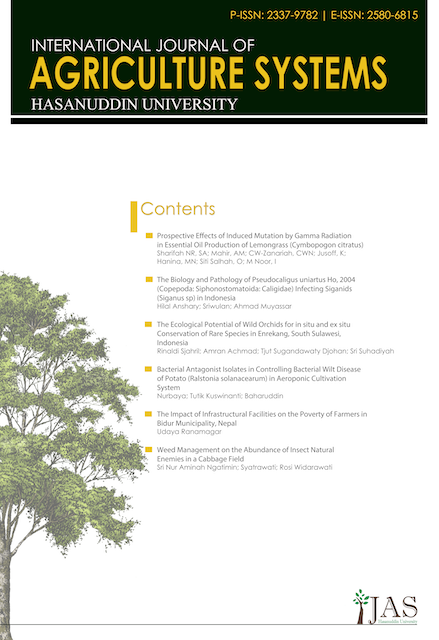Morphological and Physicochemical Characterization of Rhychoporus spp. on Aren Plants as a Food Source in Minahasa Regency, North Sulawesi
DOI:
https://doi.org/10.20956/ijas.v12i1.5803Keywords:
Morphology, Physicochemical Properties, Rhychoporus spp, Aren PlantAbstract
Rhychoporus spp., commonly known as the sago beetle Rhychoporus ferrugineus, is a pest that affects aren, rumbia, and coconut plants. Despite its pest status, the larvae of Rhychoporus spp. have long been recognized for their value as food and as ingredients in medicine and cosmetics. This comprehensive research, which thoroughly investigates the morphological characteristics and nutritional components of Rhychoporus spp. found in aren plants in Minahasa Regency, North Sulawesi Province, aims to provide a reliable and valid understanding of this species. The findings of this study have potential applications in the fields of entomology and food science. For entomologists, the detailed morphological characteristics of Rhychoporus spp. can aid in species identification and classification. For food scientists, the nutritional components of the larvae can be used to explore its potential as a food source and its applications in medicine and cosmetics. A descriptive method was used, involving field and laboratory research. The field study was conducted in Walensorit Village, Minahasa Regency. Morphological research used the Mizzi method, with measurements conducted using Carl Zeiss and Hirox KH8700 microscopes. The nutritional analysis included moisture, ash, protein, fat, carbohydrate, and fiber content, using standard methods such as drying, Kjeldahl analysis, Soxhlet extraction, and proximate analysis. The average body length of Rhychoporus spp. was 28.574 mm, with variations in abdomen length (8.936 mm), pronotum length (7.899 mm), head size (6.299 mm), and pronotum width (6.508 mm). The physicochemical analysis revealed that the larvae contain 70.04% water, 3.66% minerals, 1.35% calcium, 1.18% phosphorus, and 0.66% coconut minerals. The protein content was 7.78%, fat 19.04%, crude fiber 0.62%, and carbohydrates 2.33%. These comprehensive findings contribute to a better understanding of the species and its potential uses.


